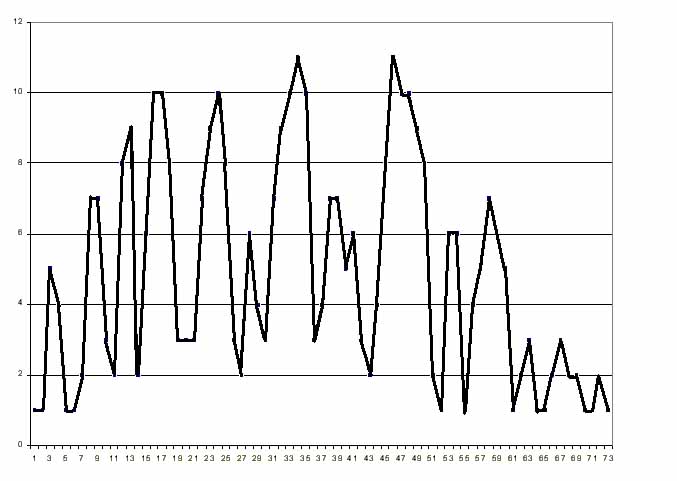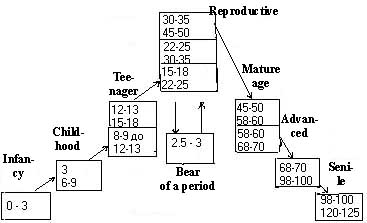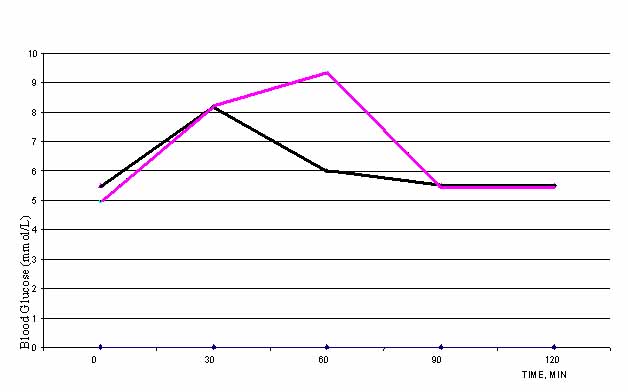

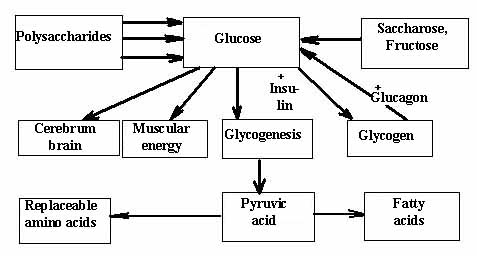
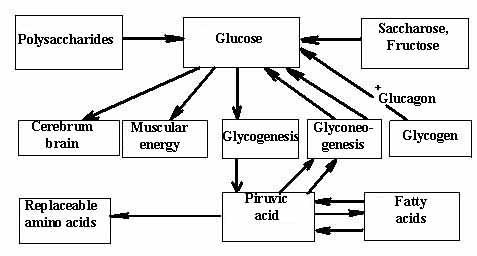
| Organic acids | Healthy | The patients with obesity, prescription of diseases, years | ||||
| 3 | 5,5 | 7 | 10 | 11 | ||
| Pyruvic acid | 0,01 | 0,35 | 0,41 | 0,38 | 0,85 | 0,63 |
| x1 | 0 | 0,09 | 0,12 | 0,07 | 0,12 | 0,24 |
| Tartaric acid | 0 | 0,07 | 0,05 | 0,06 | 0,09 | 0,11 |
| Citric acid | 0,02 | 0,09 | 0,10 | 0,08 | 0,08 | 0,10 |
| x2 | 0 | 0 | 0,02 | 0,05 | 0,09 | 0,12 |
| Total | 0,03 | 0,60 | 0,70 | 0,63 | 1,23 | 1,20 |
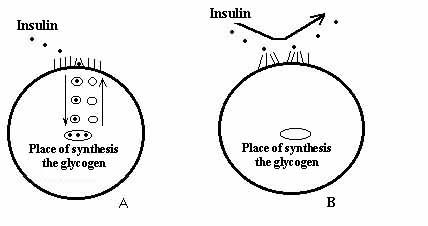
| Sugar | Healthy | The patients with obesity, prescription of diseases, years | ||||
| 3 | 5,5 | 7 | 10 | 11 | ||
| Fucose | 0,01 | 0 | 0 | 0 | 0 | 0 |
| Mannose | 0,46 | 0,07 | 0,07 | 0,11 | 0,13 | 0,08 |
| Glucose | 5,78 | 6,39 | 6,85 | 7,12 | 6,93 | 7,58 |
| x1 | 0,07 | 0,09 | 0,06 | 0,08 | 0,10 | 0,09 |
| x2 | 0,15 | 0,19 | 0,07 | 0,10 | 0,06 | 0,04 |
| x3 | 0,01 | 0,05 | 0,08 | 0,09 | 0,08 | 0,06 |
| Total | 6,48 | 6,80 | 7,14 | 7,51 | 7,31 | 7,86 |
| Kinds of reaction on fucose | With a level of glucose in blood (mmol/L) | ||||
| Up to 4,5 | 4,5 - 6,0 | 6,0 - 7,5 | > 7,5 | Total | |
| Negative reaction | 0 | 6 | 3 | 6 | 15 |
| Poorly positive | 0 | 12 | 3 | 2 | 17 |
| Positive | 0 | 0 | 0 | 0 | 0 |
| Average intensity | 0 | 0 | 0 | 0 | 0 |
| High intensity | 0 | 0 | 0 | 0 | 0 |
| Total | 0 | 18 | 6 | 8 | 32 |
